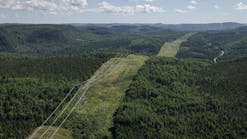I finished last month’s “Charging Ahead” assignment, and it’s time to relax. I like to do that by catching up with some of the webinars that I didn’t have time to watch the first time around. One of the nice things about webinars is their streaming on-demand feature. It lets me fit them into my schedule rather than missing them because of timing issues.
The current crop of virtual offerings covers a lot of different topics. They include LiDAR, artificial intelligence, substation modernization, and grid modernization to list a few, but there is one that really got my attention. The webinar sponsored by Siemens was titled “Visions of 2040: What’s in Store for the Energy Industry,” and it had some interesting discussion points.
A couple of months ago, I had written about the "macrogrid,” but the presenters took that a couple of steps further with a discussion on global and transnational grid interconnectivity. There were several other topics that caught my interest like making virtual power plants more stable with power electronics, deep interconnectivity, and platform trading. I had some serious investigating to do.
I headed off to one of my favorite tech sites for more research on future articles, but I got sidetracked by a strange margin-photo, which often happens. I thought it was an airplane making a water landing, but according to the article, I was way off target. The photo was of Orbital Marine Power’s O2 floating tidal power platform being towed to Scotland’s Orkney Islands. That photo had taken me into a corner of the grid I hadn’t visited in a long time:, lunar-powered renewables.
Hydrokinetic Energy
I find the whole concept of tidal turbine technology fascinating. Tidal technology has been used for thousands of years to grind grains, but today’s technology includes a variety of turbines making electricity. Tidal technologies take advantage of the moon’s pull on the Earth.
To be more technically accurate, it’s the interaction between the gravities of the sun, moon, and the rotation of the earth. All of which move an enormous quantity of ocean water around the globe in predictable patterns (i.e., high and low tides). It’s all about harvesting the kinetic energy of the tidal changes and converting the hydrokinetic energy into electricity.
Getting back to the Orbital O2, the platform is rated 2 megawatts (MWs) and it’s undergoing operational testing at the European Marine Energy Center in Scotland. The Center offers developers all of the facilities they need to test their equipment in open sea conditions. It was established in 2003 to provide extensive tidal testing resources for tidal energy technologies in a variety of marine environments.
Tidal power projects is still a niche market, but interest is growing. There are an increasing number of demonstration projects around the world in various stages of development utilizing tidal turbines, fences, and barrages. There are also several fully operational tidal power projects that have output capacities that are referred to as utility-scale generation.
In South Korea, the Sihwa Lake tidal power station utilizes a long seawall and has an output capacity of 254 MWs. It has been producing power since 2011 with an annual generation capacity of 552.7 gigawatt-hours (GWh). It uses ten 25.4 MW submerged bulb turbines.
Another tidal power plant is the La Rance tidal power station in Brittany, France. It is the oldest tidal power plant and has been operational since 1966. It’s also the second largest tidal generator with a compacity of 240 MWs with an annual power capacity of 540 GWh. It is a barrage facility using 24 reversible bulb turbines rated 10 MWs each.
The Annapolis Royal Generating Station in the Annapolis Basin of the Bay of Fundy in Canada was commissioned in 1984. It uses a single four-blade turbine and sluice gates to generate 20 MW of power with an annual power capacity of 50 GWh.
Marine energy systems are starting to attract attention on a global scale. Pilot projects have been announced or are taking place in Spain, China, Italy, Greece, United States, United Kingdom, and Ireland to name a few. The cumulative power generation is growing into the multi-megawatt domain.
There are still a lot of obstacles to overcome before anyone can say it’s a trending technology. But keep in mind, the industry has only been seriously working on the technology for a few decades. Tidal energy technology has potential and it will definitely be interesting watching its development.


